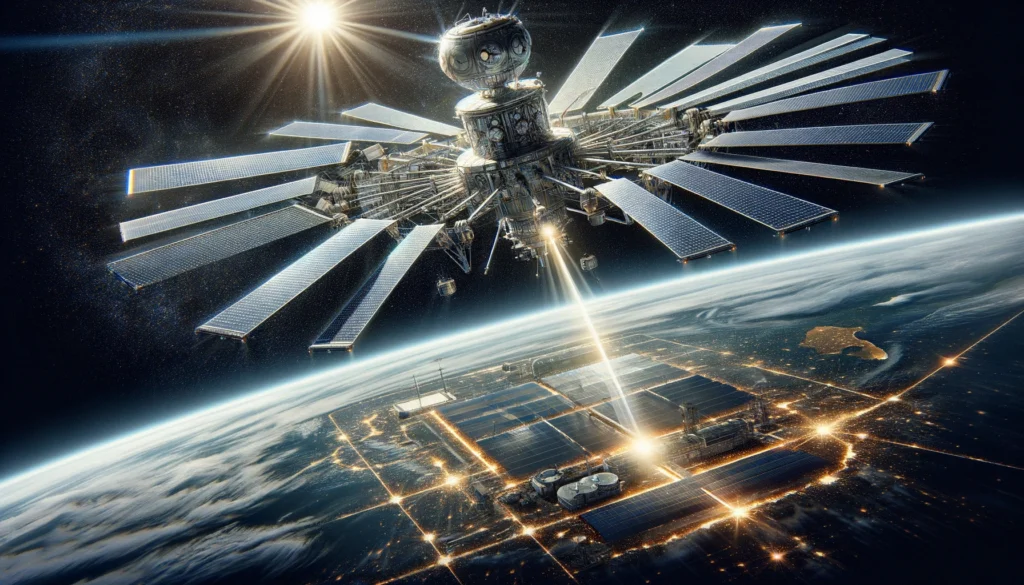In the final installment of our series on the economics of space exploration, we turn our attention skyward to the boundless potential awaiting us beyond Earth’s atmosphere. The exploration of space is not just a journey outward but also a quest for resources that could sustain future generations and drive economic growth. This blog delves into the fascinating prospects of off-Earth resources and the emerging trends poised to redefine humanity’s place in the cosmos.
Unlocking Off-Earth Resources
Water Ice: The Lifeblood of Space Exploration
Water ice, discovered on the Moon and Mars, represents more than just a basic necessity for future astronauts. It’s a potential source of oxygen and hydrogen, which could support life and fuel rockets, making long-duration space missions feasible. The exploitation of these resources is a critical step towards sustainable space exploration and colonization.

Rare Metals and Minerals: Wealth Beyond Worlds
The allure of precious metals and rare minerals on celestial bodies like asteroids and the Moon could transform economies. These resources, used in everything from electronics to renewable energy technologies, offer a glimpse into a future where space mining contributes significantly to Earth’s economy and technological advancement.
Solar Energy: Powering the Future
Space-based solar power (SBSP) concepts envision collecting solar energy in space, free from atmospheric limitations, and transmitting it to Earth. This inexhaustible energy source could play a crucial role in meeting global energy demands, highlighting the economic and environmental potential of space resources.
Helium-3: Fueling Tomorrow’s Fusion Reactors
Helium-3, abundant on the Moon’s surface, is touted as an ideal fuel for nuclear fusion, promising a clean and efficient energy source. The pursuit of fusion technology and the potential extraction of helium-3 underscore the long-term economic and environmental benefits of off-Earth resource utilization.
Current and Future Trends in Space Exploration
Commercial Space Activities: Expanding the Economic Frontier
The entry of private companies into space exploration has introduced a competitive edge, accelerating innovation and reducing costs. These entities are not only launching satellites and crewed missions but also laying the groundwork for space tourism, asteroid mining, and even the colonization of other planets.

International Collaboration: Charting the Path Forward
The future of space exploration will be shaped by global partnerships, pooling resources, expertise, and visions for space exploration. Projects like the Artemis program, aiming to return humans to the Moon, exemplify the power of international cooperation in achieving ambitious goals and ensuring shared benefits.
Advanced Propulsion Technologies: Shortening the Cosmic Distance
Innovations in propulsion technology, such as ion thrusters and nuclear thermal propulsion, promise to make space travel faster and more efficient. These advancements could open up the solar system to further exploration and exploitation, making the dream of Mars colonization and beyond a closer reality.
Conclusion
The future of space exploration offers exciting possibilities for economic growth, technological advancement, and the expansion of human presence in the cosmos. By harnessing off-Earth resources and embracing innovative trends, humanity stands on the brink of a new era, where the stars are not just destinations but opportunities to sustain and enrich our civilization for generations to come.
As we conclude this series, we look forward with optimism to the role space exploration will play in humanity’s future, reminding us that the final frontier is not just a place to explore but a realm of infinite possibilities waiting to be unlocked.
Author’s Note
Thank you for joining me on this exploratory journey through the economics of space exploration, the potential of off-Earth resources, and the future trends that promise to expand our horizons. I hope this series has ignited your imagination and offered insights into the exciting opportunities that space exploration holds for our planet and its people. As we gaze up at the night sky, let’s dream of the possibilities that lie in the vastness of space, ready for us to discover and embrace.
G.C., Ecosociosphere contributor.
References and Further Reading
- NASA Artemis Program: Dive into NASA’s plans to return humans to the Moon and establish sustainable exploration by the end of the decade. https://www.nasa.gov/artemis
- SpaceX Mars Plans: Learn about SpaceX’s vision for making life multi-planetary and the development of the Starship for Mars colonization. https://www.spacex.com/human-spaceflight/mars/
- The Planetary Society: Offers comprehensive resources on space science and exploration, including the latest on off-Earth resource utilization. https://www.planetary.org
- International Space Exploration Coordination Group (ISECG): For insights into how countries are collaborating to shape the global exploration strategy. https://www.globalspaceexploration.org
These resources provide a deeper understanding of the ongoing efforts and future plans for space exploration, offering a glimpse into the exciting developments that await us as we venture further into the cosmos





Comments
Thanks for sharing. I read many of your blog posts, cool, your blog is very good.
Thank you for your sharing. I am worried that I lack creative ideas. It is your article that makes me full of hope. Thank you. But, I have a question, can you help me?
Your point of view caught my eye and was very interesting. Thanks. I have a question for you.
I don’t think the title of your article matches the content lol. Just kidding, mainly because I had some doubts after reading the article.